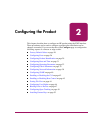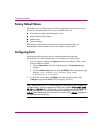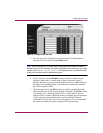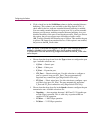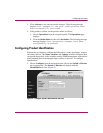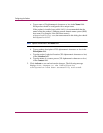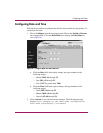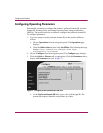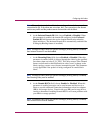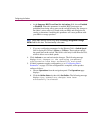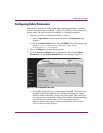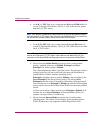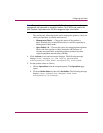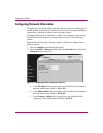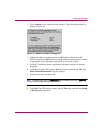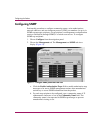
Configuring the Product
33Embedded Web Server User Guide
Note: If the product is attached to a fabric element, the product and element must have
unique domain IDs. If the values are not unique, the E_Port connection to the element
cannot carry traffic and the product cannot communicate with the fabric.
b. At the Insistent Domain ID field, choose Enabled or Disabled. When
this parameter is enabled, the domain ID configured in the Preferred
Domain ID field becomes the active domain identification when the
fabric initializes. (The Insistent Domain ID is automatically enabled if the
SANtegrity Binding feature is installed.)
Note: If Enterprise Fabric Mode (an optional SANtegrity Binding feature) is enabled,
then Insistent Domain ID must be enabled.
c. At the Rerouting Delay field, choose Enabled or Disabled. When this
parameter is enabled, traffic is delayed through the fabric by the specified
error detect time out value (E_D_TOV). This delay ensures Fibre Channel
frames are delivered to their destination in order, even if a change to the
fabric topology creates a new (shorter) transmission path. This parameter
is only applicable if the product is being configured in a multiswitch
fabric.
Note: If Enterprise Fabric Mode (an optional SANtegrity Binding feature) is enabled,
then Rerouting Delay
must be enabled.
d. At the Domain RSCNs field, choose Enabled or Disabled. When this
parameter is enabled, messages can be sent between end devices in a
fabric to provide additional connection information to host bus adapters
(HBA) and storage devices. Consult with your HBA and storage device
vendor to determine if enabling Domain RSCNs will cause problems with
your HBA or storage products.
Note: If Enterprise Fabric Mode (an optional SANtegrity Binding feature) is enabled,
then Domain RSCNs must be enabled.



